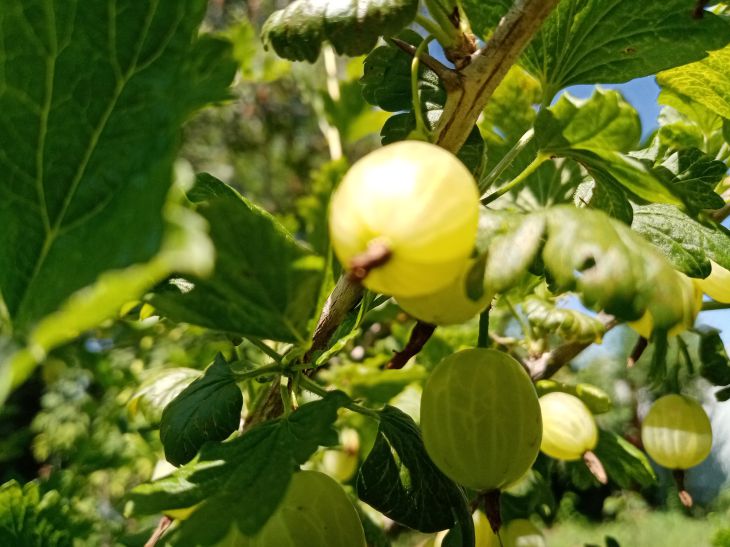Gooseberries Covered with Brown Coating: Causes and What to Do
Gooseberry is an unpretentious crop that many summer residents grow on their plots.
However, there are situations when gooseberry leaves begin to become covered with a brown coating. It is worth examining the main causes and methods of control.
Main diseases
The appearance of a brown coating on berries should cause concern for all summer residents. As practice shows, we are talking about dangerous diseases that should be dealt with immediately.
It is unacceptable to delay or postpone the fight, as the diseases will progress and may lead to the death of the plants.
Rust
Leaf rust is easiest to spot. It appears as brown-orange spots on:

- Stems.
- Leaves.
- Flowers.
This disease can occur due to the following reasons:
- frequent watering;
- excessive precipitation;
- dense plantings;
- growing in lowlands where moisture can accumulate.
To combat rust, you can use fungicides. An alternative is 1% Bordeaux mixture. The treatment should definitely be done before the leaves begin to bloom. The second treatment should be done when the first buds appear. Some people still do the treatment in the summer, there is no mistake in this, but it is worth monitoring the condition of the crops.
Powdery mildew
This disease can be called one of the most common at the moment. Powdery mildew begins to manifest itself from mid-spring. The disease affects all parts of the plant, and the change in the color of the berries is simply a natural result.
The disease manifests itself as follows:
- The shoots begin to gradually become deformed.
- The leaves dry out and become distorted.
- The berries stop growing and change color.
For powdery mildew, you can use fungicides and other similar products. You can also give preference to ammonium nitrate, for this you need to dissolve 50 g in 10 liters of water. All shoots and leaves of gooseberries are treated with the solution.
Arrhythmia
A dangerous fungal disease that gradually begins to manifest itself. Initially, small diameter spots begin to appear on the gooseberry leaves, which increase in volume over time.
If measures are not taken in time, the spots will gradually spread to fruits and shoots. It is important to understand a simple fact: if measures are not taken in time, the disease can destroy the entire crop.
Preventive measures
It is not necessary to constantly prune and monitor the condition of the bush. In most situations, it is enough to follow several recommendations for prevention:
- The distance between the bushes should be at least 2 meters. If it is less, it makes sense to remove one of the bushes. In this case, the amount of harvest will begin to increase.
- In early spring, you can treat gooseberries with boiling water. The method is effective, it prevents diseases and pests that may be in the soil.
- The soil should be regularly loosened and mulched.
- It is important to shape the crown every season. If you do not monitor the condition of the bush, there is no point in expecting a good harvest.
- There should be no grass or fallen leaves under the bush. As practice shows, plant debris most often contains spores of dangerous fungi.
- In spring, organic fertilizers should be applied. Mineral fertilizers should not be excluded either.
The bush should be inspected regularly. Simple treatment and pruning will be enough to keep it in good condition.
